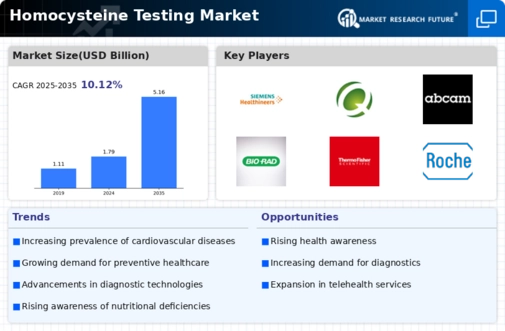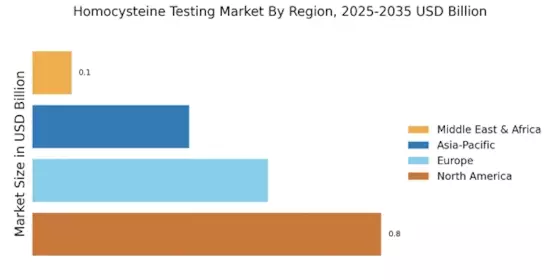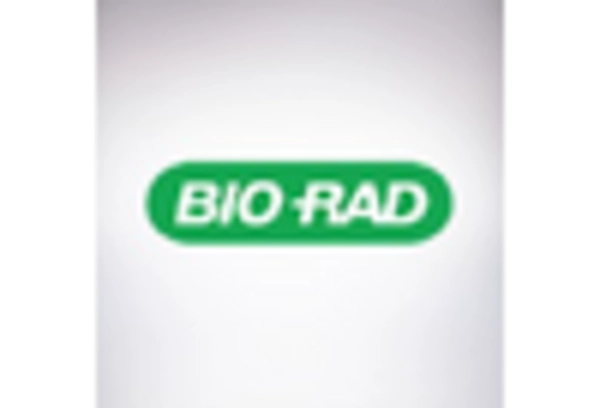Advancements in Laboratory Technology
Technological innovations in laboratory testing are transforming the Homocysteine Testing Market. The introduction of more sophisticated and efficient testing methods, such as high-performance liquid chromatography and mass spectrometry, has improved the accuracy and speed of homocysteine level assessments. These advancements not only enhance diagnostic capabilities but also reduce the turnaround time for results, which is crucial for timely clinical decision-making. The market for laboratory testing technologies is expected to grow significantly, with projections indicating a compound annual growth rate of over 7% in the coming years. This growth is likely to further stimulate the demand for homocysteine testing as healthcare facilities seek to adopt cutting-edge technologies.
Rising Focus on Preventive Healthcare
The increasing emphasis on preventive healthcare is a notable driver for the Homocysteine Testing Market. As healthcare systems worldwide shift from reactive to proactive approaches, there is a growing recognition of the importance of early detection and risk assessment. Homocysteine testing plays a critical role in identifying individuals at risk for cardiovascular diseases before symptoms manifest. This proactive approach aligns with public health initiatives aimed at reducing the burden of chronic diseases. The preventive healthcare market is projected to witness substantial growth, potentially reaching USD 4 trillion by 2025. This trend suggests a favorable environment for the expansion of homocysteine testing services.
Growing Demand for Personalized Medicine
The shift towards personalized medicine is influencing the Homocysteine Testing Market significantly. As healthcare evolves, there is a growing emphasis on tailoring treatments to individual patient profiles, which includes genetic predispositions and biomarker levels. Homocysteine testing serves as a valuable tool in this context, allowing healthcare providers to assess cardiovascular risk more accurately. The market for personalized medicine is projected to reach substantial figures, with estimates suggesting it could exceed USD 2 trillion by 2025. This trend indicates a robust potential for homocysteine testing to become an integral part of personalized healthcare strategies, enhancing patient care and outcomes.
Regulatory Support for Diagnostic Testing
Regulatory bodies are increasingly supporting the development and implementation of diagnostic testing, including homocysteine testing, which is positively impacting the Homocysteine Testing Market. Initiatives aimed at improving healthcare quality and patient safety are leading to the establishment of guidelines that encourage routine screening for cardiovascular risk factors. This regulatory support not only enhances the credibility of homocysteine testing but also promotes its integration into standard clinical practice. As healthcare policies evolve to prioritize preventive measures, the market for diagnostic tests is expected to expand, with homocysteine testing likely benefiting from these favorable regulatory changes.
Increasing Prevalence of Cardiovascular Diseases
The rising incidence of cardiovascular diseases is a primary driver for the Homocysteine Testing Market. As cardiovascular conditions continue to affect a significant portion of the population, healthcare providers are increasingly focusing on preventive measures. Elevated homocysteine levels have been linked to a higher risk of heart disease, prompting clinicians to incorporate homocysteine testing into routine assessments. According to recent data, cardiovascular diseases account for approximately 31% of all global deaths, underscoring the urgent need for effective screening methods. This trend is likely to propel the demand for homocysteine testing, as early detection can lead to timely interventions and improved patient outcomes.


















Leave a Comment